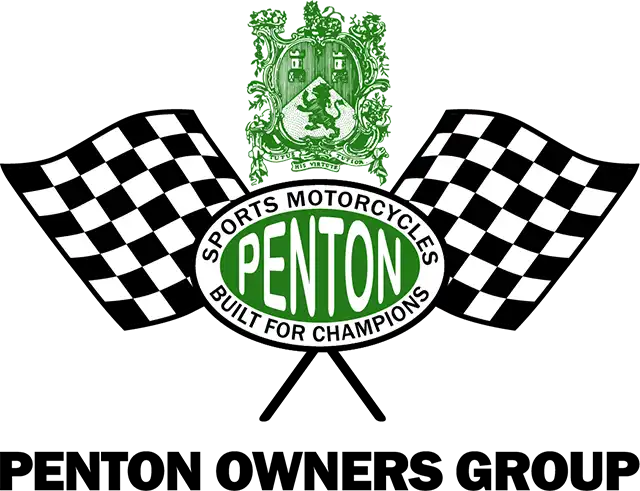KTM bikes from 1978-88
What's the Difference?
by Alan Buehner
Originally printed in the 2006 issue #32 of Still….Keeping Track
Since the post-vintage racing scene is seeing more and more participation each year, I felt that it was time to focus some attention to the 1978+ KTM machines. This article will help identify the years that new models were being introduced and the major changes that were happening. Although KTM was slow in incorporating reed valves, water cooling and single rear shock suspension to their bikes, they did their homework before doing so and avoided many of the problems that the Japanese bikes encountered.
KTM bikes, up to model year 1983 are Post-Vintage legal as long as they have twin shock rear suspensions and are not water cooled.
1978 – Last year of the MC & GS frames
This was a repeat of the 1977 model bikes in the MC-5 or GS-6 frames with minor changes made to the frames, air boxes, and swing arms. They were available in engine sizes 125/ 175/ 250/ and 400. They were equipped with 35 or 38mm Marzocchi front forks.
1979 – First year of the 420
The MC-5 and GS-6 frames were discontinued and a new generation frame, the MC80/ GS80 was introduced. This was an all-in-one frame that was basically set up for m-x (like the 70's CMF bikes) and could be converted to a GS by bolting on a rear frame loop and adding lighting. The 125cc/ 175cc/ 250cc/ and 400cc engines were still available. The new 420cc MC80 was introduced to the line-up. It was to be the replacement for the 400cc engine and provided plenty of controlled power without the power band “hit” that the 400 gave.
1980 – First year of the 495
This was the last year for the 400cc engine and the first year for the powerful 495cc. In July the following engines were introduced: the 420cc (type 560)/ 350cc (type 561)/ 390cc (type 562)/ 495cc (type 563). All bikes were available in the MC or GS versions. This was the last year for the 175 engine.
1981 – First reed valve & water cooled engines
The 250/II (type 541) was introduced in October of 1980. It was available as a 5 speed MC or 6 speed GS. In January the following bikes were available: 125cc/ 250cc/ 350cc/ 390cc/ 420cc/ & 495cc. In March the 125cc engine was changed and available in 2 versions: 125II/RV (air cooled with a reed valve) and 125II/LC (liquid cooled with a reed valve). This was KTM's first production of a water cooled and reed valve engine.
1982 – First Pro Lever rear shock
This was the first year for the KTM “Pro Lever” single shock rear suspension. It was introduced in December 1981 on the 250cc & 495cc MC bikes and they also came equipped with 40mm Marzocchi front forks. The 250cc/ 390cc/ & 495cc engines were equipped with reed valves. The 250 came in 2 versions: 250GS (type 541) and 250MC (type 542). In June the first 4 stroke KTM bikes were introduced in GS form only. They were available in 2 sizes, 350 & 500cc with Rotax engines built by Bombadier, had “Pro Lever” rear suspensions, and were the first KTM's to come with front disc brakes.
1983 – First water cooled 250
In November of 1982 a new model, the XC was introduced. This was a desert enduro that was made to compete with the Husqvarnas being ridden in California. The models available were: 125cc MX-XC-GS / 250cc XC-GS/ 420cc GS-XC/ and 495cc MX-XC. In June the 250cc MX/LC (type 543) was released and became the second engine in the KTM stable to become water cooled. All bikes were equipped with 38 or 40mm Marzocchi forks, the 495 came with 42mm Marzocchi forks.
1984 – First KTM 4-stroke engine
In September of 1983 changes were made to the 250cc (type 543) engine and it was available in MX, MXC or GS form. In November of 1983 a new 125cc (type 501) engine was introduced and was available in MX or MXC form. Also in November the Rotax engine was available in 348cc GS/ 506cc GS/ & 560cc GS form for 1984. These were the last models for the KTM/ Rotax bikes. In March KTM released their own 500cc & 600cc 4 stroke engines in GS or MX form. This was the last year for both, the 420cc which was available in GS or MXC form, and the 495cc which was available in MX or MXC form. They and the 4 strokes came with “White Power” upside down 40mm forks.
1985 – Front disc brakes
An all new 500cc (type 565) 2-stroke was introduced to replace the 420 & 495. It was available in MX, MXC, & XC-GS form. The line-up of bikes also included 125– 240– 250– 300cc. These were available in MX, MXC, GSXC, & GS forms. All bikes were equipped with front disc brakes.
1986 – Rear disc brakes
KTM went small and introduced it's “Pro-Mini” 80cc (type 490) MX bike. A new 350cc (type 555) engine was also introduced and was available in MXC & GS form. All bikes were equipped with rear disc brakes. This was the last year for the (type 544) 240-250-300-350cc engines. “White Power” forks were available for all 125cc & larger bikes.
1987 -
A new (type 502) 125cc and (type 545) 240-250cc engines were introduced and were available in MX or Enduro form. The 350 was also available in MX or Enduro form and the 500 was available in MX form only.
1988 –
The new LC4 (type 580) 4 stroke engine was introduced and was available in 500 & 600cc sizes. The lineup included the following 2-stroke engines: 125cc (type 502), 240-250cc (type 545), 350cc (type 555), & 500cc (type 565) and they were available in MX or Enduro form.


